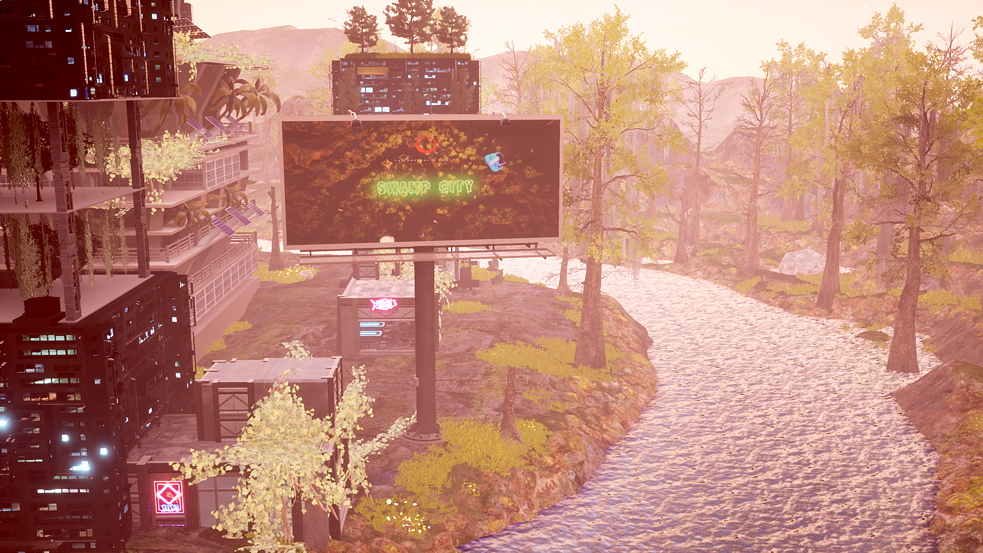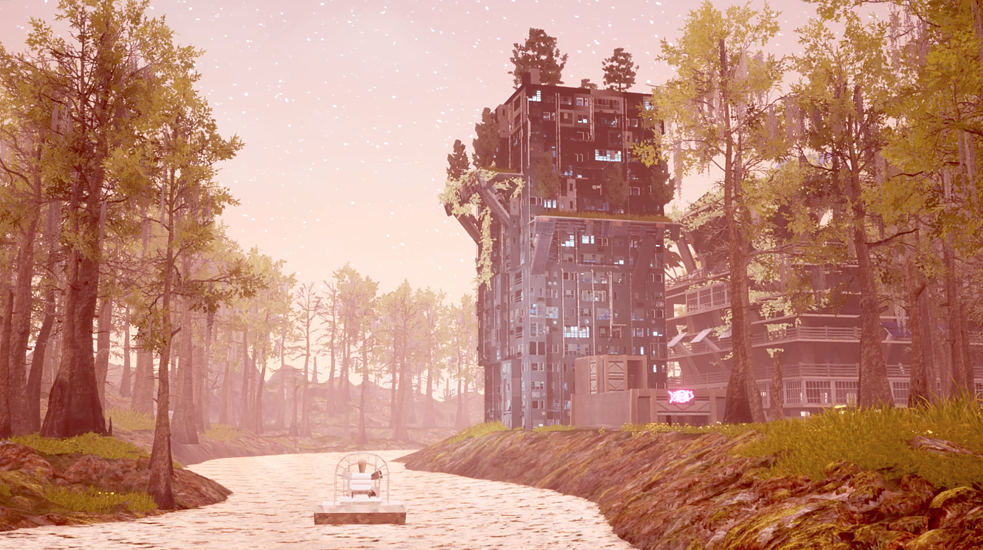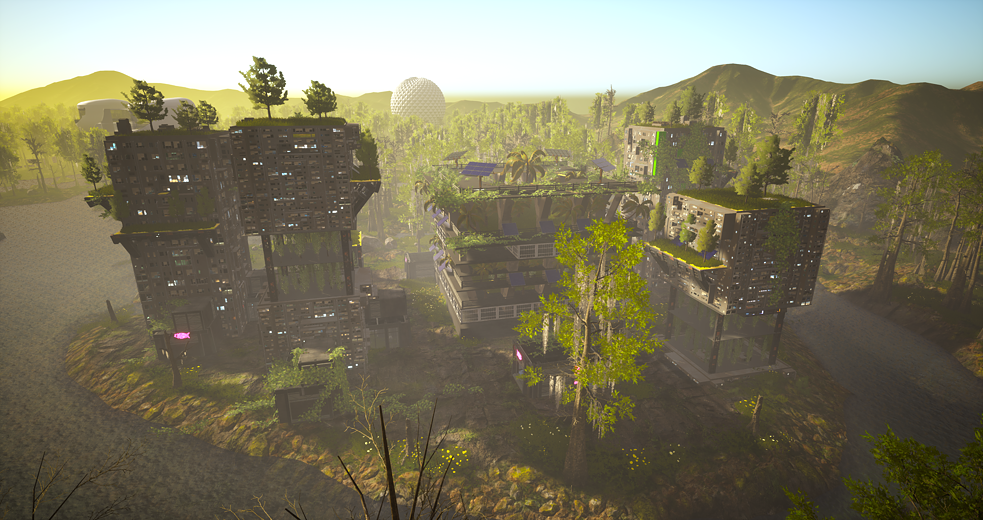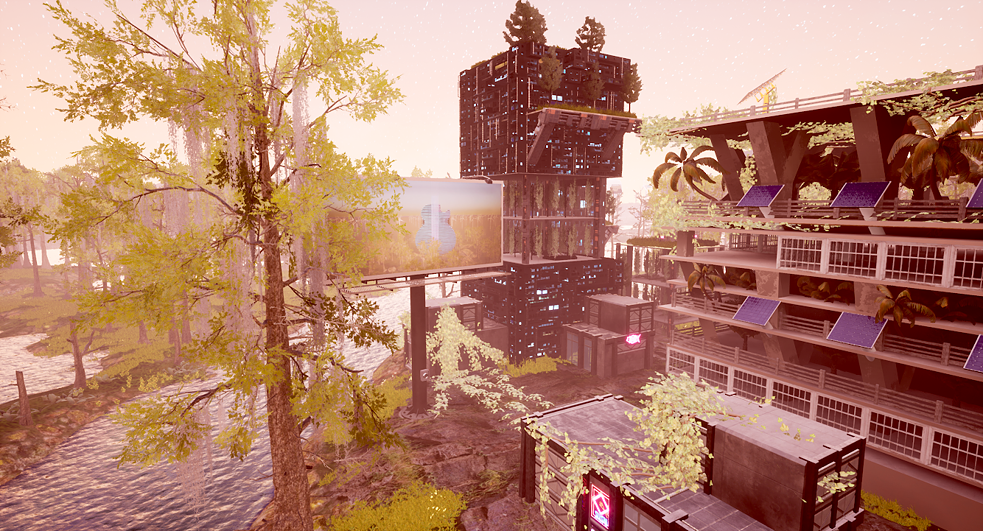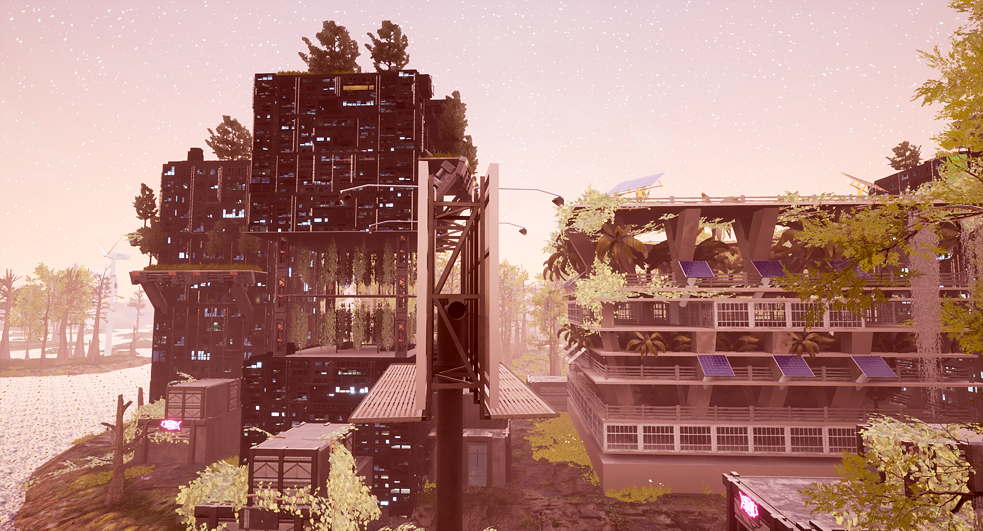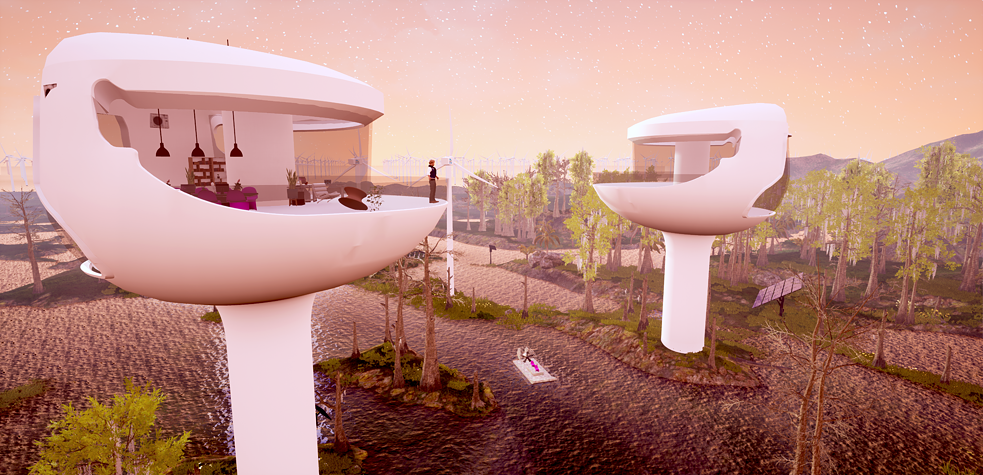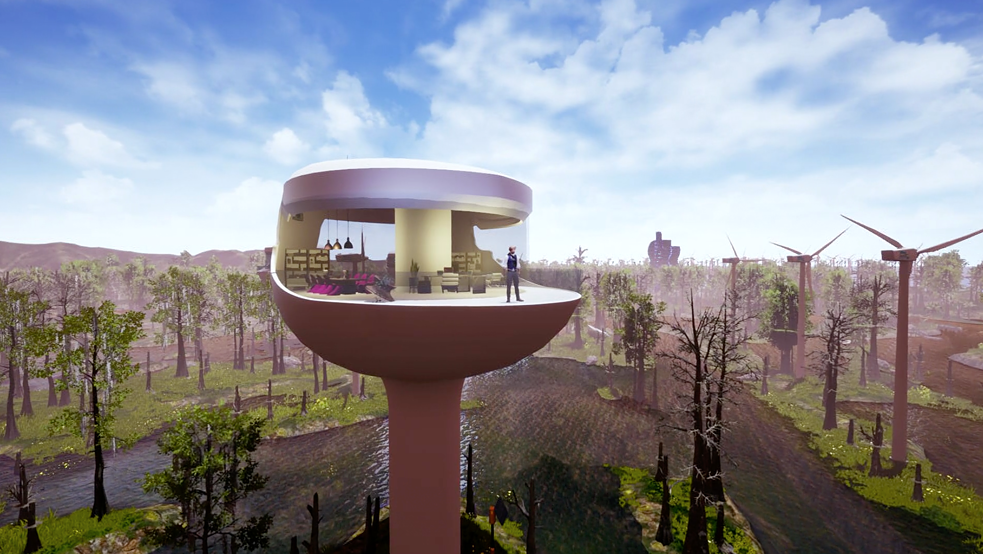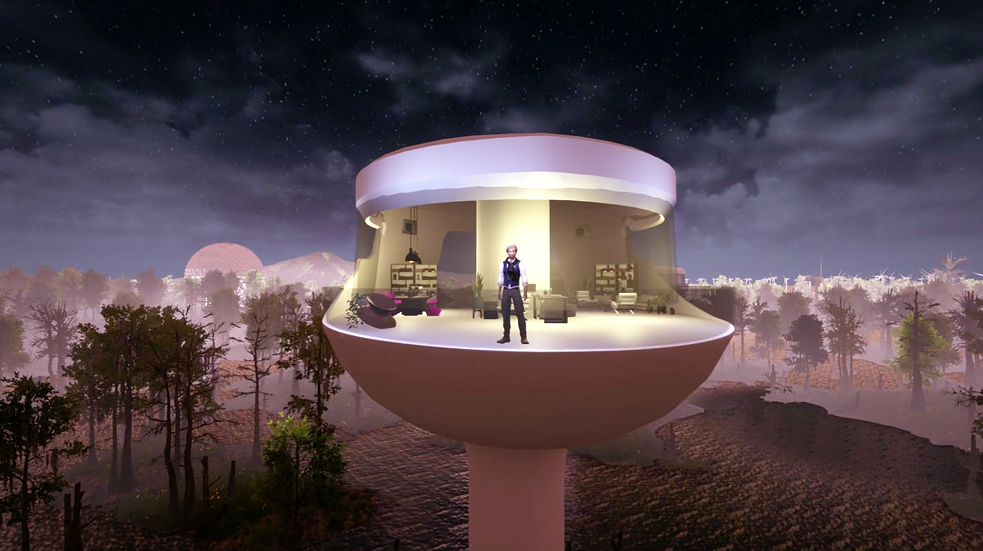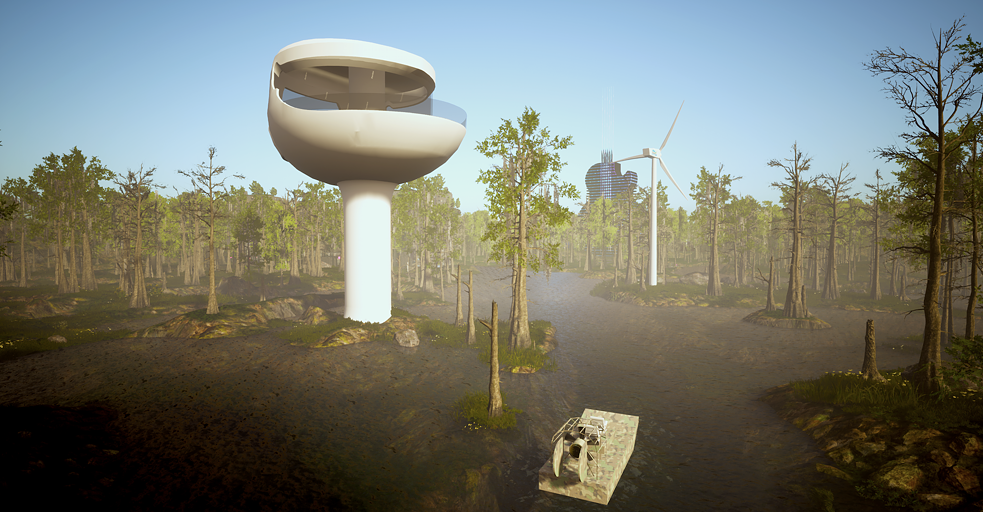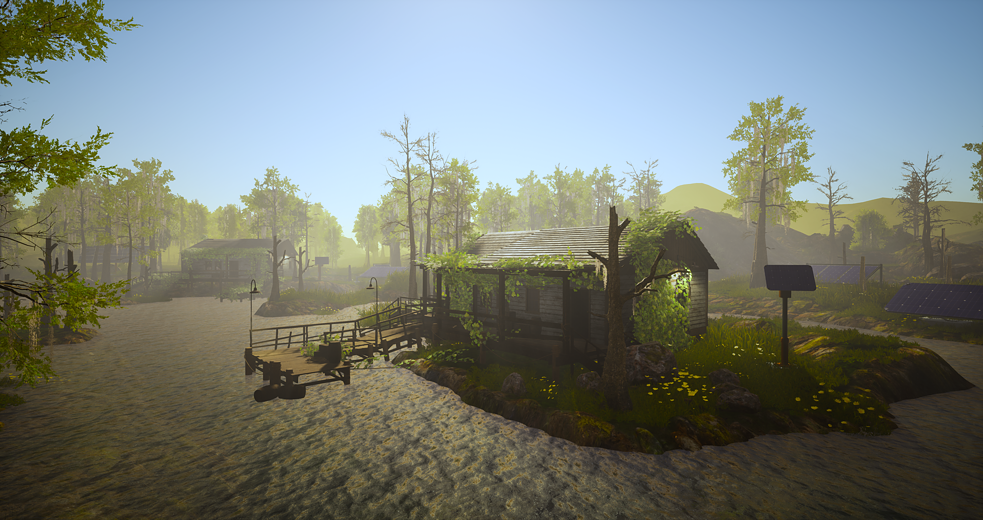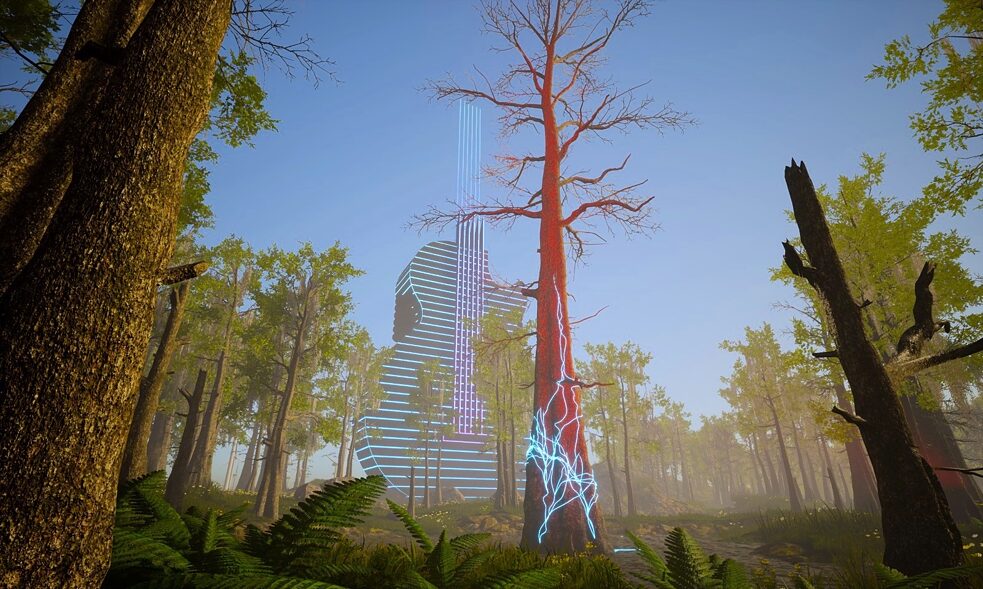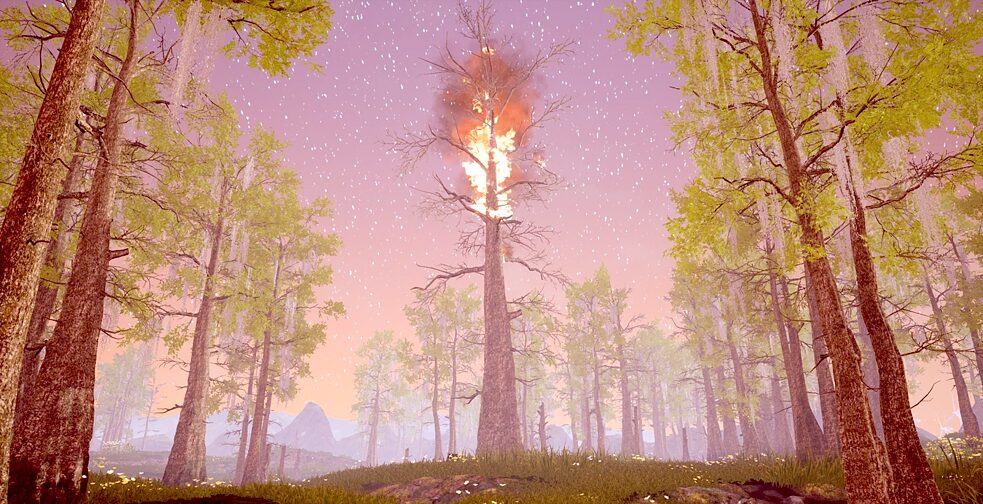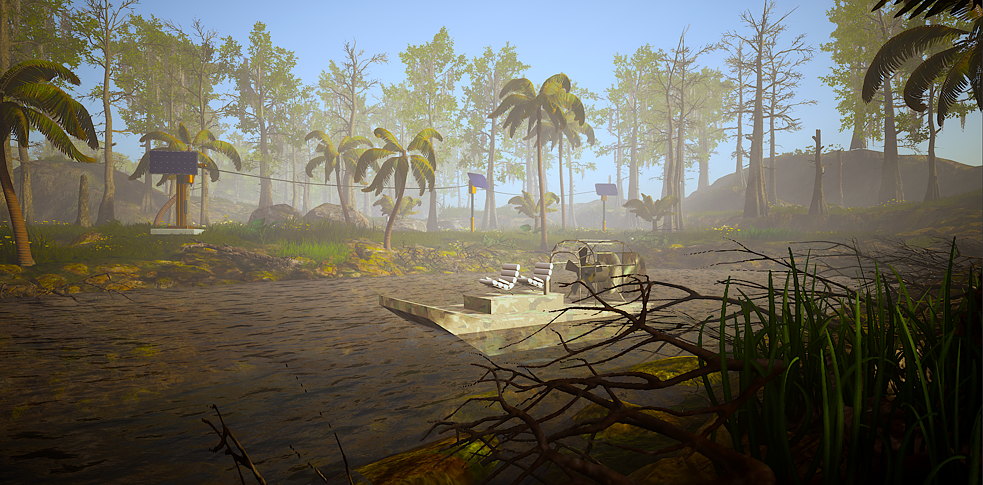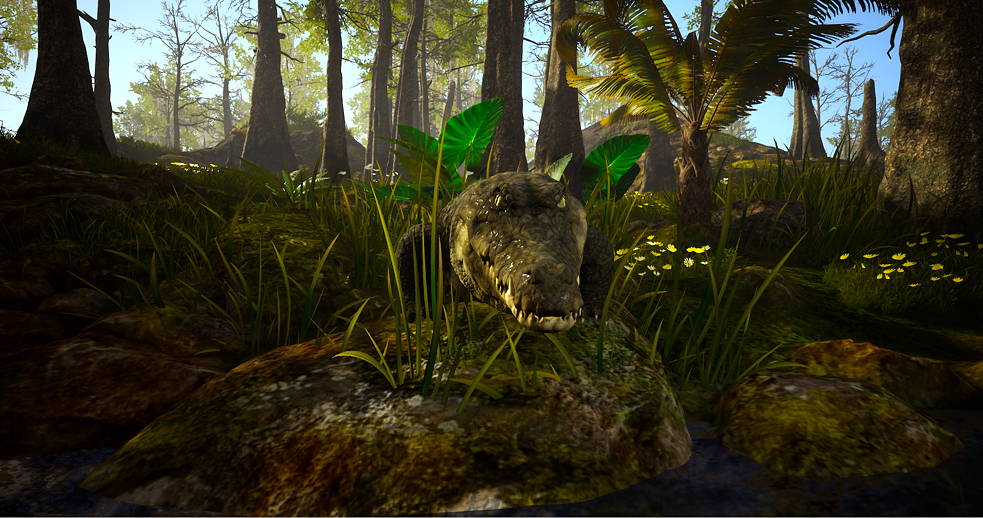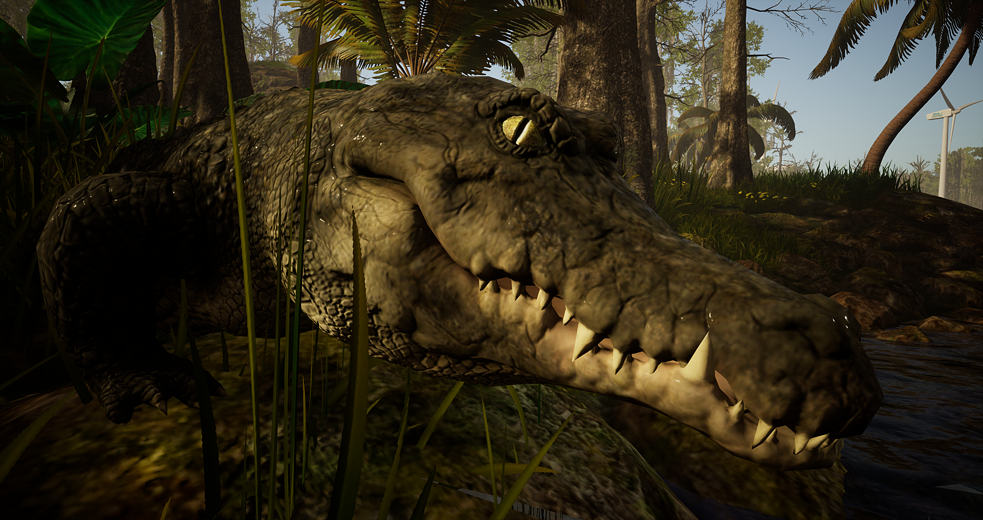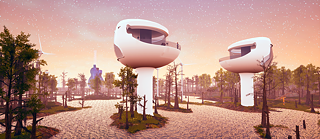
Swamp City (2021)
By Alice BucknellSwamp City speculates on the future of the smart city and its human and more-than-human inhabitants.
The 34 minute-long video project imagines the Florida Everglades as a luxury eco-tourism retreat in a near-future reality of severe climate disruption. Featuring both human and non-human protagonists, including an anthropomorphic alligator refusing to migrate, an opportunistic celebrity architect, and a 3,500-year-old Bald Cypress Tree resurrected with AI, it explores the tensions between developers, lifestyle capitalism, sentient technology, and a dying swamp.
Swamp City works towards an understanding of the city as an entangled ecological system, using contemporary ideas from the fields of anthropology, architecture, biology, technology, and environmental science to build a speculative city within a game engine. The city is situated within the Everglades National Park, one of the largest protected wildlife areas in the United States, an environment that is nonetheless subjected to human-induced climate change, salination, erosion, and the destruction of natural resources.
The project also borrows from contemporary ecological theory, including the Half Earth theory, a controversial 2016 proposal by biologist EO Wilson, who suggests that if we split the world into two, turning one half into an arena of hyper-productive neoliberal industrial agriculture,we would have enough resources to feed the planet - and the other half of the planet can be rewilded.
Following Wilson's logic, Swamp City introduces a similar proposal: by turning the National Park into a high-tech, luxury resort for a jaded elite public to "fully reconnect with nature" inside a carbon-neutral smart city. Swamp City's architect and master planner argues that through this luxury eco-tourism economy, it can raise the necessary funds to permanently protect the swamp ecosystem - despite fetishizing it and vending it as a slice of "true nature" within the experience economy, while continuing to develop the technology and design of the smart city. by turning the National Park into a high-tech, luxury resort for a jaded elite public to "fully reconnect with nature" inside a carbon-neutral smart city.Swamp City's architect and master planner argues that through this luxury eco-tourism economy, it can raise the necessary funds to permanently protect the swamp ecosystem - despite fetishizing it and vending it as a slice of "true nature" within the experience economy, while continuing to develop the technology and design of the smart city. by turning the National Park into a high-tech, luxury resort for a jaded elite public to "fully reconnect with nature" inside a carbon-neutral smart city.Swamp City's architect and master planner argues that through this luxury eco-tourism economy, it can raise the necessary funds to permanently protect the swamp ecosystem - despite fetishizing it and vending it as a slice of "true nature" within the experience economy, while continuing to develop the technology and design of the smart city.
The project mediates on the imperfect and strained relationship between the city and the countryside, between man-made and "natural" environments. Using the ideas of ecofeminist theorist Donna Haraway and anthropologist Anna Tsing, it ultimately suggests that in the era of the Anthropocene, these boundaries or binaries are irrelevant and unhelpful distinctions. Everything has muddied together - in the words of Haraway, "we are all in the same muck".Humans, plants, and animals are all part of the same ecosystem, and we are all at risk of extinction - unless we act now, together.
To elevate the voice of the non-human, the narrative of Swamp City is told by multiple overlapping narrators: the architect responsible for the park's creation, an alligator living in the park who refuses to leave, and an ancient Bald Cypress Tree, modeled on a real-life tree in the Everglades, called The Senator, that was accidentally burned down in 2014. It incorporates multiple iconic built structures within the Florida landscape - from Walt Disney's Epcot Dome to the electric guitar-shaped Seminole Hard Rock Hotel - to further blur the distinction between fact and fiction.Swamp City aims to make visible the complexity of entanglements within the ecological and cultural systems of nature and the city, presenting them as two parts of a constituent whole that must be considered from a more-than-human perspective.
The 34 minute-long video project imagines the Florida Everglades as a luxury eco-tourism retreat in a near-future reality of severe climate disruption. Featuring both human and non-human protagonists, including an anthropomorphic alligator refusing to migrate, an opportunistic celebrity architect, and a 3,500-year-old Bald Cypress Tree resurrected with AI, it explores the tensions between developers, lifestyle capitalism, sentient technology, and a dying swamp.
Swamp City works towards an understanding of the city as an entangled ecological system, using contemporary ideas from the fields of anthropology, architecture, biology, technology, and environmental science to build a speculative city within a game engine. The city is situated within the Everglades National Park, one of the largest protected wildlife areas in the United States, an environment that is nonetheless subjected to human-induced climate change, salination, erosion, and the destruction of natural resources.
The project also borrows from contemporary ecological theory, including the Half Earth theory, a controversial 2016 proposal by biologist EO Wilson, who suggests that if we split the world into two, turning one half into an arena of hyper-productive neoliberal industrial agriculture,we would have enough resources to feed the planet - and the other half of the planet can be rewilded.
Following Wilson's logic, Swamp City introduces a similar proposal: by turning the National Park into a high-tech, luxury resort for a jaded elite public to "fully reconnect with nature" inside a carbon-neutral smart city. Swamp City's architect and master planner argues that through this luxury eco-tourism economy, it can raise the necessary funds to permanently protect the swamp ecosystem - despite fetishizing it and vending it as a slice of "true nature" within the experience economy, while continuing to develop the technology and design of the smart city. by turning the National Park into a high-tech, luxury resort for a jaded elite public to "fully reconnect with nature" inside a carbon-neutral smart city.Swamp City's architect and master planner argues that through this luxury eco-tourism economy, it can raise the necessary funds to permanently protect the swamp ecosystem - despite fetishizing it and vending it as a slice of "true nature" within the experience economy, while continuing to develop the technology and design of the smart city. by turning the National Park into a high-tech, luxury resort for a jaded elite public to "fully reconnect with nature" inside a carbon-neutral smart city.Swamp City's architect and master planner argues that through this luxury eco-tourism economy, it can raise the necessary funds to permanently protect the swamp ecosystem - despite fetishizing it and vending it as a slice of "true nature" within the experience economy, while continuing to develop the technology and design of the smart city.
To elevate the voice of the non-human, the narrative of Swamp City is told by multiple overlapping narrators: the architect responsible for the park's creation, an alligator living in the park who refuses to leave, and an ancient Bald Cypress Tree, modeled on a real-life tree in the Everglades, called The Senator, that was accidentally burned down in 2014. It incorporates multiple iconic built structures within the Florida landscape - from Walt Disney's Epcot Dome to the electric guitar-shaped Seminole Hard Rock Hotel - to further blur the distinction between fact and fiction.Swamp City aims to make visible the complexity of entanglements within the ecological and cultural systems of nature and the city, presenting them as two parts of a constituent whole that must be considered from a more-than-human perspective.

